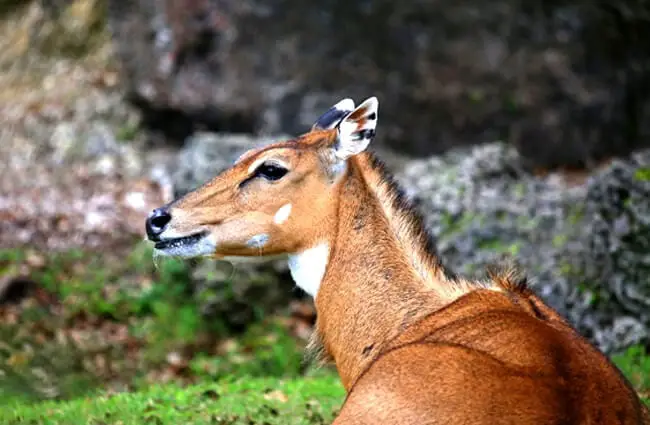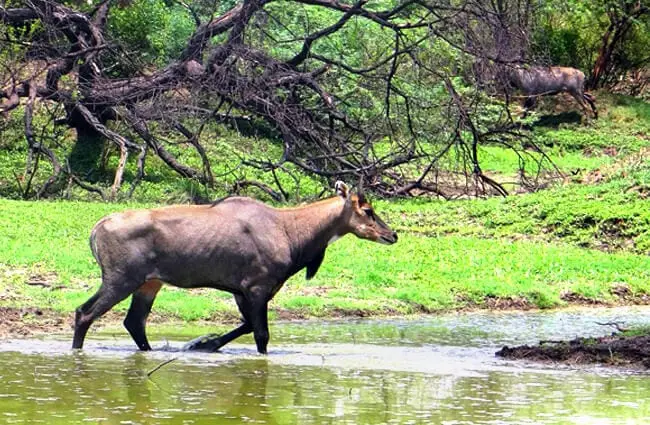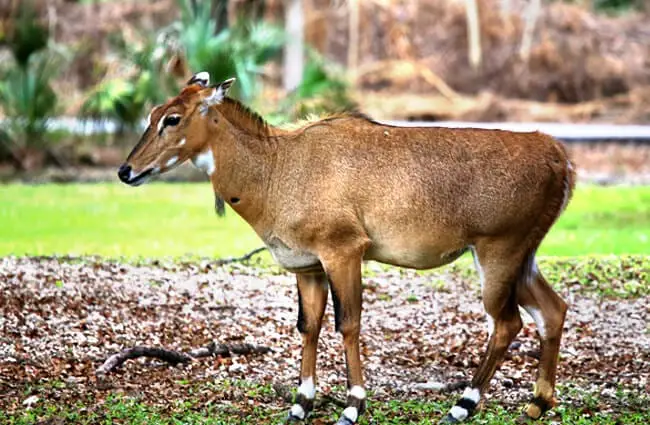The Enigmatic Blue Bull Nilgai A Comprehensive Guide
The Nilgai Boselaphus tragocamelus, often called the blue bull, is a captivating large antelope found exclusively in the Indian subcontinent. More than just a striking animal, the Nilgai represents a unique evolutionary pathway and plays a vital ecological role. This guide delves into every facet of this remarkable creature, from its physical characteristics and behavior to its history, habitat, and interactions with both the environment and humans.

Physical Characteristics and Identifying Features
The Nilgai is easily recognizable by its striking blue-grey coat, hence the common name ‘blue bull’. However, this coloration is more pronounced in males, particularly during the breeding season. Mature males exhibit a dark, almost black, coloration on the face and forequarters. Females and younger males are a lighter shade of blue-grey. A distinctive feature is the presence of white markings on the face, including around the eyes and muzzle.
Adult males can weigh between 150 and 240 kilograms and stand up to 1.5 to 1.7 meters tall at the shoulder. Females are smaller, weighing around 100 to 150 kilograms. Both sexes possess short, pointed horns, although those of the males are thicker and more robust. The Nilgai has a relatively slender build with long legs, well‑suited to its grassland habitat.
Habitat and Distribution
Historically, the Nilgai inhabited a wider range across the Indian subcontinent. Today, its distribution is largely restricted to India, Nepal, Pakistan, and Bangladesh. It primarily favors dry grasslands, scrublands, and open deciduous forests. These animals are highly adaptable and can also be found in agricultural areas, often foraging on crops. They require access to water sources but can tolerate arid conditions.

Diet and Foraging Behavior
Nilgai are primarily herbivores, with a diet consisting mainly of grasses, leaves, fruits, and occasionally agricultural crops. They are selective feeders, choosing nutrient‑rich vegetation. Their long legs allow them to reach higher vegetation than many other herbivores. During the dry season, they may browse on shrubs and trees. They are known to visit agricultural fields, particularly those growing wheat, rice, and sugarcane, which can sometimes lead to conflict with farmers.
Social Behavior and Reproduction
Nilgai exhibit a unique social structure. Adult males are generally solitary or live in small bachelor groups. Females and their young form herds of up to 30 individuals. These herds provide protection from predators and facilitate cooperative foraging. The breeding season typically occurs between December and March. Males compete for access to females through elaborate displays of aggression and dominance.
Gestation lasts approximately eight months, resulting in the birth of a single calf. Calves are precocial, meaning they are relatively well‑developed at birth and can stand and walk shortly after. The mother will protect her calf from predators and provide it with milk for several months. Young Nilgai reach sexual maturity at around three years of age.

Evolutionary History and Taxonomy
The Nilgai is considered one of the more primitive antelope species within the Bovidae family. Its evolutionary history is still being researched, but it is believed to have diverged from other antelope lineages relatively early. It is the sole member of the genus Boselaphus, making it a unique and distinct species. Some researchers suggest it may be closely related to the African bushbuck and impala, though genetic studies have not confirmed a definitive relationship. Fossil evidence indicates that Nilgai‑like animals were present in the Indian subcontinent millions of years ago.
Ecological Role and Interactions
Nilgai play an important role in their ecosystem. As herbivores, they help to control vegetation growth and maintain grassland habitats. They are also prey for large predators such as tigers, leopards, and wild dogs. Their grazing habits can influence plant diversity and create microhabitats for other animals. They often coexist with other herbivores, such as deer and gazelles, and compete for resources. Their presence can also benefit seed dispersal and nutrient cycling.

Interactions with Humans
Historically, Nilgai were hunted for meat and sport. Today, hunting is largely restricted, but conflict with farmers remains a concern. Nilgai often raid crops, leading to economic losses and resentment from local communities. Conservation efforts are focused on mitigating human wildlife conflict, protecting habitats, and raising awareness about the importance of Nilgai conservation. In some areas, Nilgai are also viewed as a symbol of prosperity and are revered in local culture.
Finding Nilgai in the Wild A Guide for Enthusiasts
If you are hoping to spot a Nilgai in the wild, focus your efforts on protected areas within its range, such as national parks and wildlife sanctuaries in India. The best time to see them is during the cooler months, when they are more active. Look for open grasslands and scrublands, and be patient. Bring binoculars and a camera to capture your sightings. Remember to maintain a safe distance and avoid disturbing the animals.
Nilgai in Captivity Considerations for Zookeepers
Caring for Nilgai in captivity requires a spacious enclosure that mimics their natural habitat. Provide a mix of grassland, scrubland, and shade trees. A varied diet of grasses, hay, and browse is essential. Provide access to fresh water at all times. Nilgai are social animals, so it is best to house them in small groups. Regular veterinary care and monitoring are crucial to ensure their health and well‑being. Avoid overcrowding and minimize stress to prevent behavioral problems.

Fascinating Facts About the Nilgai
- Nilgai are known for their distinctive alarm call, a deep, resonant bellow.
- Males will often dust bathe in mud to help regulate their body temperature.
- Calves are capable of running within hours of birth.
- Nilgai have a keen sense of smell and hearing.
- They can tolerate a wide range of temperatures, from freezing to scorching.
- Their urine contains a strong odor that is used for marking territory.
- Nilgai can swim well and will cross rivers and streams.
- They are known to use their horns for defense against predators.
- Nilgai play a role in seed dispersal, helping to maintain plant diversity.

The Nilgai is a remarkable animal that embodies the beauty and resilience of the Indian subcontinent. By understanding its ecology, behavior, and conservation challenges, we can help ensure its survival for generations to come.

![Red Angus Closeup of a beautiful Red Angus cowPhoto by: U.S. Department of Agriculture [pubic domain]https://creativecommons.org/licenses/by/2.0/](https://animals.net/wp-content/uploads/2020/03/Red-Angus-4-238x178.jpg)




![Red Angus Closeup of a beautiful Red Angus cowPhoto by: U.S. Department of Agriculture [pubic domain]https://creativecommons.org/licenses/by/2.0/](https://animals.net/wp-content/uploads/2020/03/Red-Angus-4-100x75.jpg)

